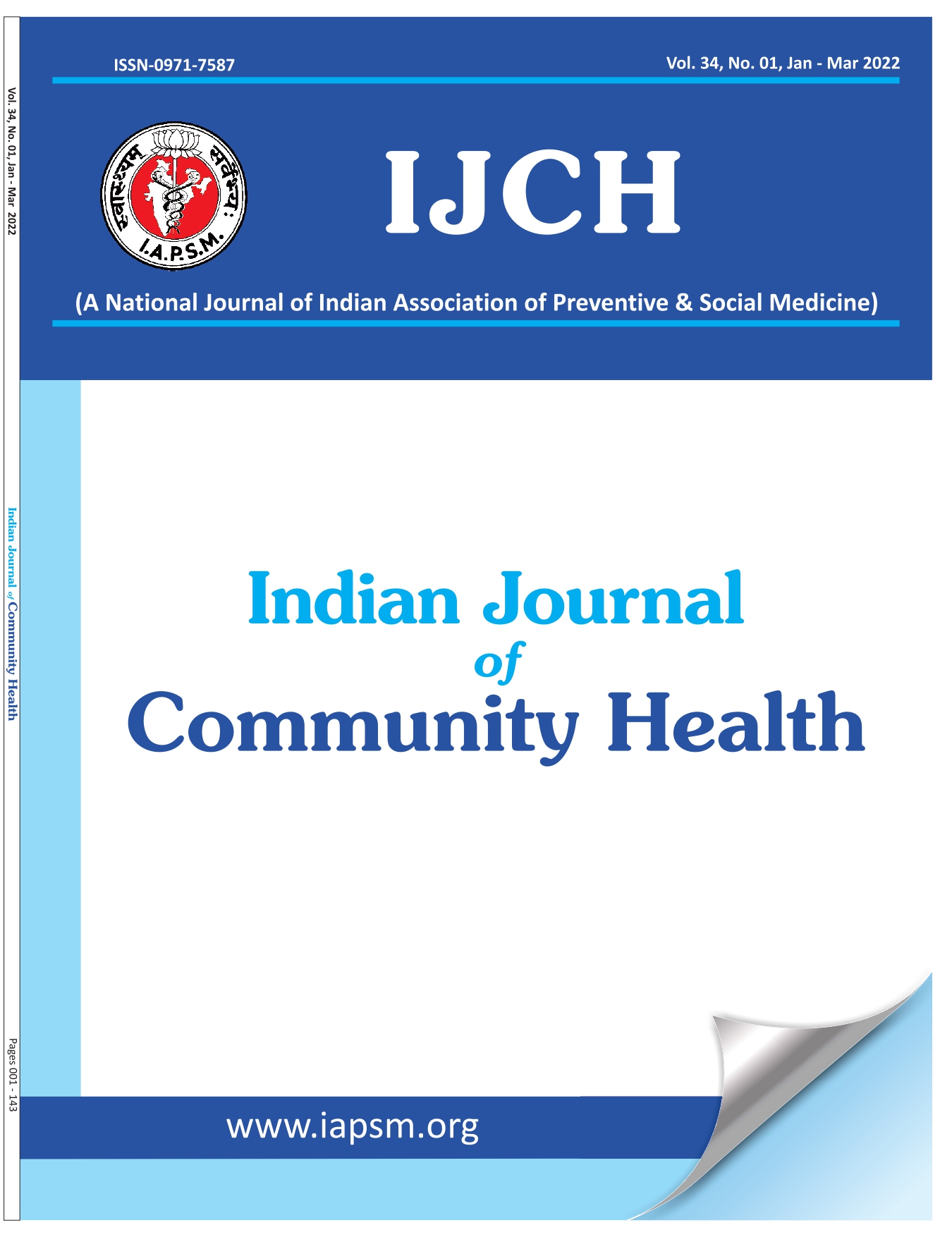Prevalence, Socio-cultural Restrictions and Determinants of School Absenteeism during Menstruation among Adolescent School Girls in Bangalore
DOI:
https://doi.org/10.47203/IJCH.2023.v35i01.013Keywords:
Adolescent, Female, Absenteeism, Prevalence, Bathroom Equipment, Focus Groups, Students, Surveys and Questionnaires, Parents, Shame, Informed Consent, FearAbstract
Introduction: Menstrual-related problems are one of the most common problems among adolescent girls and might adversely affect their performance in academic and other activities of daily life.
Aims & Objectives: 1. To determine the prevalence of school absenteeism among adolescent school girls during menstruation. 2. To assess the restrictions which are imposed on adolescent school girls during menstruation. 3. To evaluate the various factors associated with school absenteeism during menstruation.
Methods: A study was conducted by carrying out a questionnaire and focus group discussion between October 2019-January 2020 in seven schools of Bangalore city after obtaining the assent and informed consent signed by their parents.
Result: The mean age of the girls was 14.45 ± 1.71. The proportion of school absenteeism during menstruation was (30.25%). The majority (89.25%) of the students among the school absentees missed one day of school during menstruation. Among the school absentees, pain/discomfort was one of the main reasons for missing school, accounting for (69.42%). (46.25%) of the students were restricted from any kind of religious activities. Pain during menstruation, shame, fear of leakage, lack of toilet or water supply, lack of a place to dispose of sanitary pads and absence of a private place to manage periods were some factors that were associated with school absenteeism during menstruation.
Conclusion: Considerably high school absenteeism among adolescent girls due to menstruation was noted in this study, highlighting the need for improved interventions that reach girls at a young age.
Downloads
References
Bustreo F. We cannot fail to empower girls before they become women. Available at https://apps.who.int/mediacentre/ commentaries/adolescent-girls-health/en/index.html. Last accessed on 10th October 2022.
KayserGL, Rao N, Jose R, Raj A. Water, sanitation and hygiene: measuring gender equality and empowerment. Bulletin of the World Health Organization 2019 Jun 6;97(6):438.
Ray I. Women, water, and development. Annu. Rev. Environ.Resour 2007 Nov 21;32:421-49.
Bodat S, Ghate MM, Majumdar JR. School absenteeism during menstruation among rural adolescent girls in Pune. Natl J Community Med 2013 Jun 30;4(2):212-6.
Kumbeni MT, Ziba FA, Apenkwa J, Otupiri E. Prevalence and factors associated with menstruation-related school absenteeism among adolescent girls in rural northern Ghana. BMC Women’s Health 2021;21(1):1-6.
Menstrual Hygiene Scheme: Revised Guidelines for Menstrual Hygiene Scheme 2016. Available from: Menstrual Hygiene Scheme(MHS) :National Health Mission (nhm.gov.in). Last accessed on 12th October 2022.
Tegegne TK, Sisay MM. Menstrual hygiene management and school absenteeism among female adolescent students in Northeast Ethiopia. BMC public health 2014 Dec;14(1):1-4.
Sule ST, Ukwenya JE. Menstrual experiences of adolescents in a secondary school. J TurkGerGynecol Assoc 2007;8(1):7-14.
Davis J, Macintyre A, Odagiri M, Suriastini W, Cordova A, Huggett C et al.. Menstrual hygiene management and school absenteeism among adolescent students in Indonesia: evidence from a cross?sectional school?based survey. Trop Med Int Health 2018 Dec;23(12):1350-63.
Vashisht A, Pathak R, Agarwalla R, Patavegar BN, Panda M. School absenteeism during menstruation amongst adolescent girls in Delhi, India. J Fam Community Med 2018 Sep;25(3):163.
Grant M, Lloyd C, Mensch B. Menstruation and school absenteeism: evidence from rural Malawi. Comp Educ Rev 2013 May 1;57(2):260-84
Downloads
Published
How to Cite
License
Copyright (c) 2023 Brunda N K , Deepa L N, Sujatha N , DINESH PERAJE VASU, A G Kulkarni , Kurre Bhaskar

This work is licensed under a Creative Commons Attribution-NonCommercial-NoDerivatives 4.0 International License.





